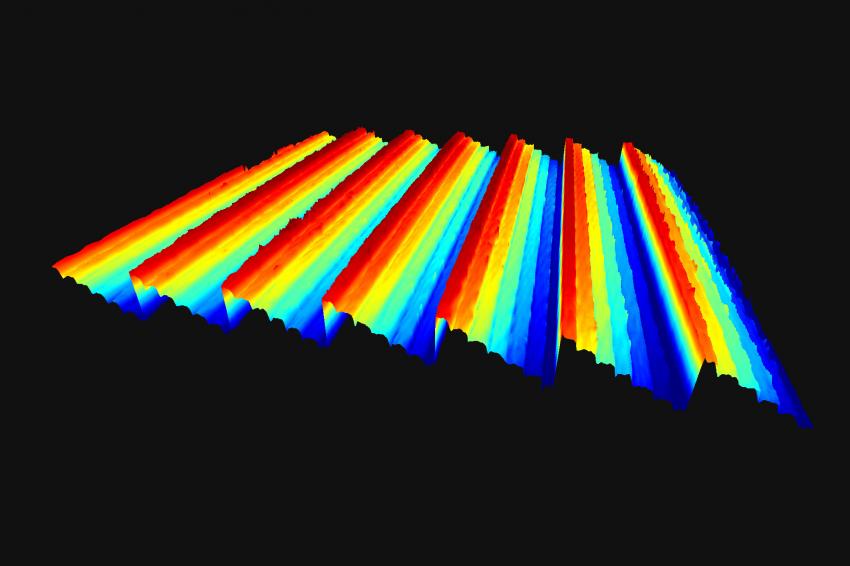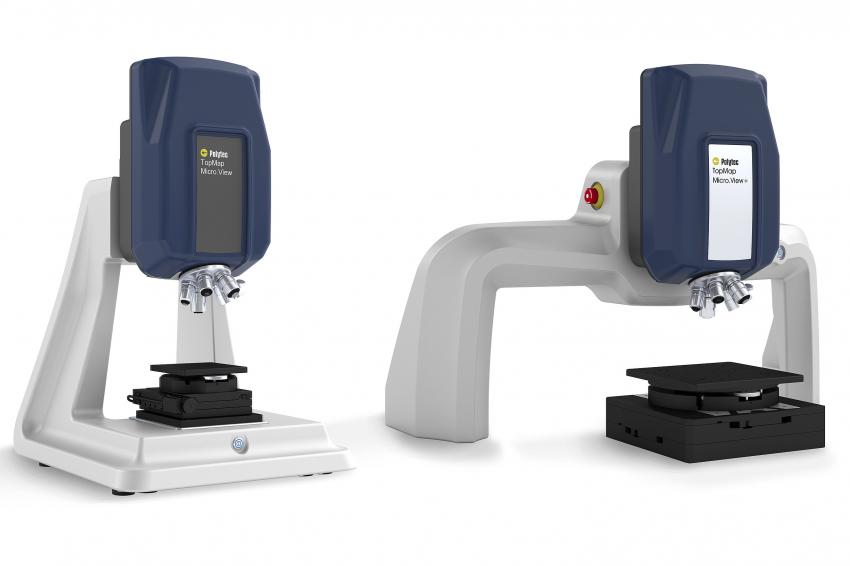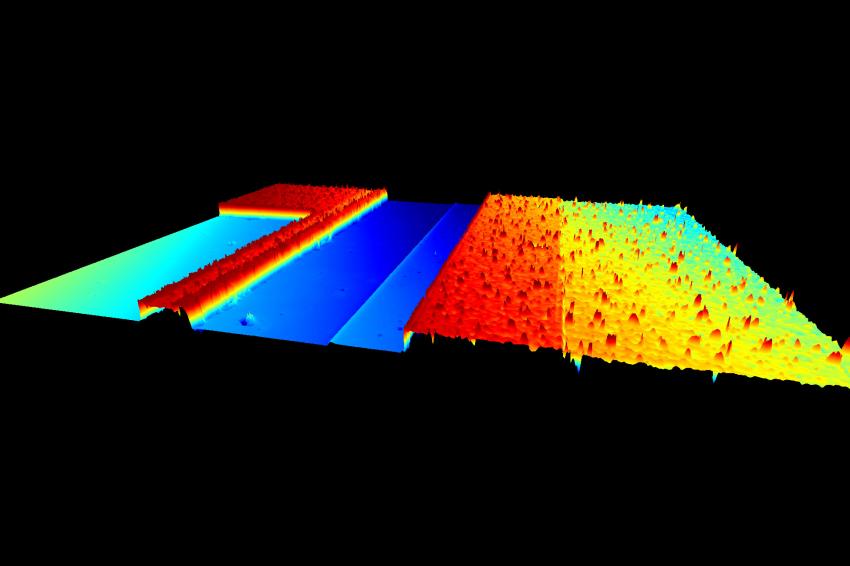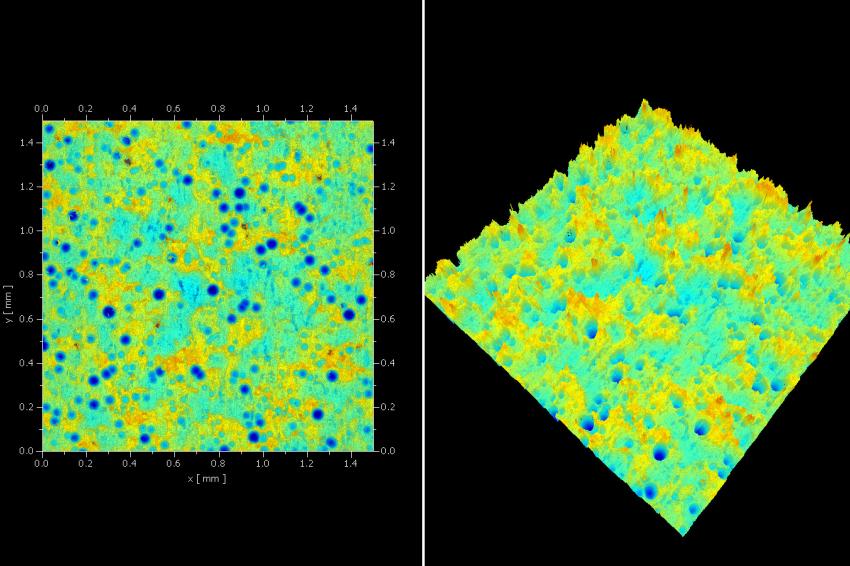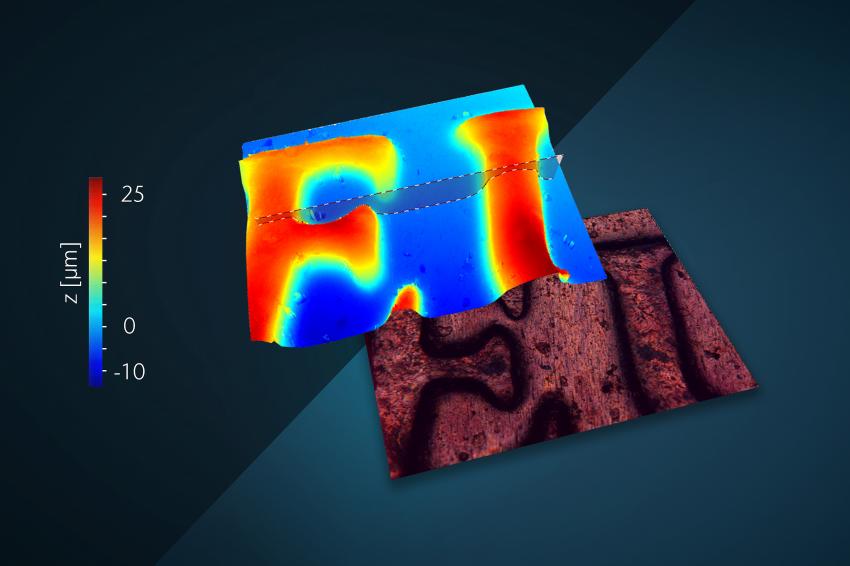High Lateral Resolution and Wide Measurement Range for Structures with Nanometer Dimensions
30.10.2020 -
When testing the surface quality of the finest structures, white-light interferometers are in their element, both in production and development, as well as in laboratories and research. This measurement principle works on almost all materials, operates without contact, providing surface profiles in 3D with height resolutions in the nanometer range. Today, large-area measurements are just as possible as detailed investigations with high lateral resolution, e.g. for surface characterization of wafers, optical components or in tribology.
Modern white-light interferometers use the interference effects that occur when the light reflected from the object under investigation is superimposed with a reference signal. This measurement procedure is based on the principle of Michelson interferometry, where the optical configuration contains a light source with a coherence length in the μm range. The collimated (i.e. straightened or parallelized) light beam is split into a measurement beam and a reference beam using a beam splitter. The measurement beam strikes the object, while the reference beam strikes a mirror. Light reflected from both the mirror and the object coincide at the beam splitter and are focused onto a camera. If the optical path for an object point in the measurement arm matches the path in the reference arm, constructive interference occurs for all wavelengths in the spectrum of the light source. The camera pixel of the respective object point then has maximum intensity. For object points with a different optical path, the assigned camera pixel has a lower intensity. Instruments with a telecentric configuration therefore allow simultaneous and quick measurement of the topography of large surfaces in a single pass. If, however, high lateral resolution is required, microscope-based systems, in which the optical configuration (including the reference arm) are integrated into the lens, are more suitable.
High Lateral Resolution Across the Entire Measurement Range
With the white-light interferometers for use in various fields of application from the TopMap series, Polytec has for several years been offering suitable measuring systems which have proven themselves in many applications. Typical applications for scanning interferometers are flatness measurements on sealing surfaces, the curvature of diaphragms, detection of warpage, or the detection of form deviations on pumps as well as high-pressure components, for example.
Recently, the demand for measurements of structural details, e.g. roughness, as well as for motorized accessories such as encoded turret and positioning stages including tip/tilt stages, have increased significantly. For this reason, the TopMap series has now been extended to include further microscope-based models. The new models offer a significantly higher number of measurement points in the X and Y-direction and, thanks to special Continuous Scanning Technology, across the entire vertical measurement range of 100 mm instead of just a few micrometers. This means that even more detailed measurements are now possible, e.g. to detect microstructures on wafer surfaces, to analyze the microstructures in printing processes, or to determine the surface roughness of optical components. The color information from the object, which is supplied in addition to the height measurement, simplifies defect detection and improves reporting capabilities. If white-light interferometers are used in harsh production environments, the optional ECT (Environmental Compensation Technology) automatically compensates for environmental disturbances.
Two Models, Many Possibilities
These two microscope systems in practice cover quite different user requirements. The table-top version TopMap Micro.View is designed as an entry-level model that can be used quickly and easily as a stand-alone solution anywhere, e.g. in smaller test laboratories or research institutes. The turret and X/Y positioning stage can be positioned manually, or a suitable motorized positioning stage is available upon request. Motorized positioning of the Z-axis is always possible.
Those requiring additional flexibility and performance are well advised to use the TopMap Micro.View+. This advanced version offers motorized X, Y and Z axes with a range of travel of 200 x 200 x 100 mm³ as well as a motorized turret and tip/tilt stage. Measurements can therefore be run automatically according to specific “recipes”. In addition, there are variation possibilities in design. For example, samples with a height up to 370 mm can be measured and, if required, the sensor head can also be separately integrated directly into the production line. Thanks to the autofocus function and automatic focus tracker, the measurement system always has the object or sample in sight. The focus tracker works similarly to a face recognition function; the focus is automatically followed if the object position varies.
Hardware and Software from a Single Source
Thanks to many export options, 3D measurement data from the white light interferometers can be processed using any suitable evaluation software. However, the TMS software, which has been specially developed for these Polytec topography measurement systems, is particularly easy and practical to use and offers numerous options for evaluating the measurement results quickly in accordance with ISO standards. “Measurement recipes” make routine tasks easier. Here, the settings for data acquisition (such as measurement position, illumination settings, camera parameters) can be defined and stored together with evaluation parameters e.g. post-processing steps, visualization or export options) for special measurement tasks. This turns complex surface analyses into simple one-click solutions. This saves time, especially in the production environment, and avoids operating errors; even non-experts can work with the measurement systems.
For those who are unsure which of the different white-light interferometers are best suited for a particular measuring task, feasibility studies combined with consulting and project support are available. In addition, potential users can confidently rely on the information given in the data sheets. Polytec is a member of the Fair Data Sheet initiative, which defines guidelines for uniform instrument and process specifications so that data sheets for optical surface metrology are transparent and, above all, comparable.

